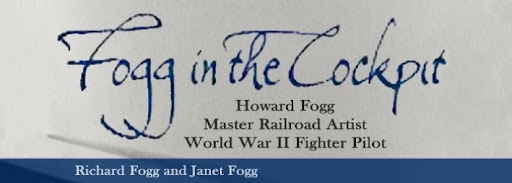 April essentially was a month of waiting: waiting for the arrival of the P-51s, waiting for the Luftwaffe to give battle, waiting for the day when strafers would find an airfield loaded with enemy aircraft, and, most of all waiting for the invasion of Festung Europa.
April essentially was a month of waiting: waiting for the arrival of the P-51s, waiting for the Luftwaffe to give battle, waiting for the day when strafers would find an airfield loaded with enemy aircraft, and, most of all waiting for the invasion of Festung Europa. This was the month when the US Strategic Air Forces in Europe cascaded more than 40,000 tons of bombs upon the enemy and his installations: a larger tonnage of explosives than was achieved by the RAF Bomber Command in that magnificent organization’s systematic destruction by fire and bomb of the German and his cities, factories, and railroads.
This was the month when the US Strategic Air Forces in Europe cascaded more than 40,000 tons of bombs upon the enemy and his installations: a larger tonnage of explosives than was achieved by the RAF Bomber Command in that magnificent organization’s systematic destruction by fire and bomb of the German and his cities, factories, and railroads.  ----------------------------------------------------------------------------------
----------------------------------------------------------------------------------Upper photo: March 27, 1944 photo of one of the first P-51Ds to arrive at East Wretham. Courtesy of Anthony C. Chardella: Archived by Char Baldridge, Historian, 359th Fighter Group Association.
Middle photo: On May 2, 1944, S/Sgt Marshall L. Binder (on wing) gives paperwork regarding the changeover from P-47s to P-51s, to Harold L. Hollis (standing) of the 370th Fighter Squadron, 359th Fighter Group. Archived by Char Baldridge, Historian, 359th Fighter Group Association, from records at HQ USAF Research Center, Maxwell Air Force Base, Alabama.
Lower photo: Two bombs per Mustang. Courtesy of Elsie Palicka, wife of Ed Palicka, 370th Fighter Squadron Photographer: Archived by Char Baldridge, Historian, 359th Fighter Group Association.
This text excerpt, included in Fogg in the Cockpit, is from the April 1944 original monthly narrative History of the 359th Fighter Group, dated 4 May 1944, archived at HQ USAF Historical Research Center, Maxwell Air Force Base, Alabama. The complete documents were transcribed and provided courtesy of Char Baldridge, Historian, 359th Fighter Group Association, from reports filed by Maurice F. X. Donohue, 359th Fighter Group historian and combat intelligence officer.








